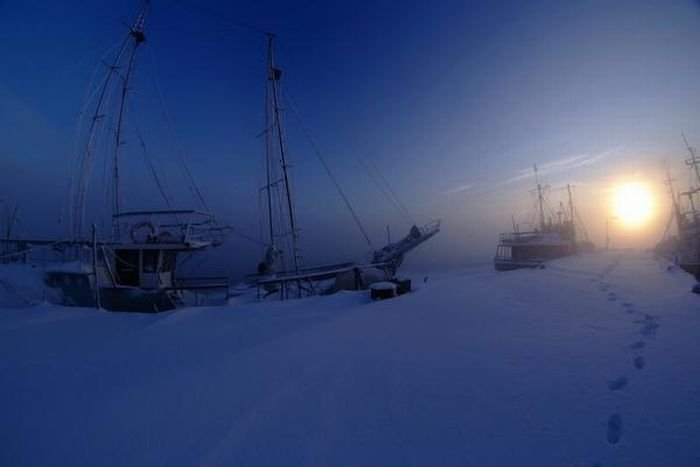|
|
Ships At Winter
|
Certain materials, such as glass or glycerol, may harden without crystallizing; these are called amorphous solids. Amorphous materials as well as some polymers do not have a true freezing point as there is no abrupt phase change at any specific temperature. Instead, there is a gradual change in their viscoelastic properties over a range temperatures. Such materials are characterized by a glass transition which occurs at a glass transition temperature which may be roughly defined as the "knee" point the material's density vs. temperature graph.
Freezing living organisms
Many living organisms are able to tolerate prolonged periods time at temperatures below the freezing point water. Most living organisms accumulate cryoprotectants such as anti-nucleating proteins, polyols, and glucose to protect themselves against frost damage by sharp ice crystals. Most plants, in particular, can safely reach temperatures −4 °C to −12 °C. Certain bacteria, notably Pseudomonas syringae, produce specialized proteins that serve as potent ice nucleators, which they use to force ice formation on the surface various fruits and plants at about −2 °C. The freezing causes injuries in the epithelia and makes the nutrients in the underlying plant tissues available to the bacteria.
|
|









